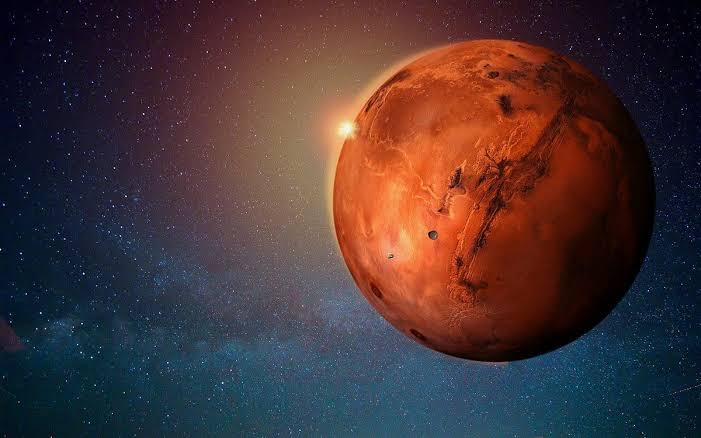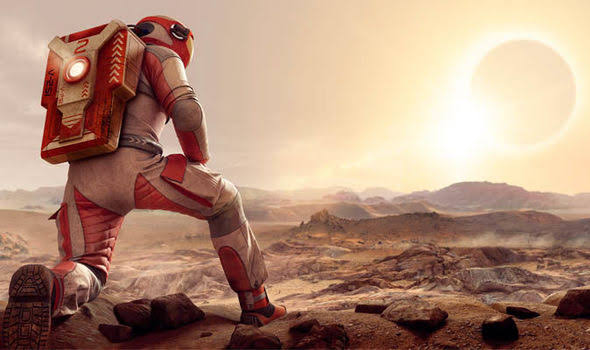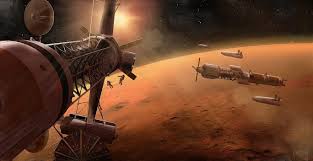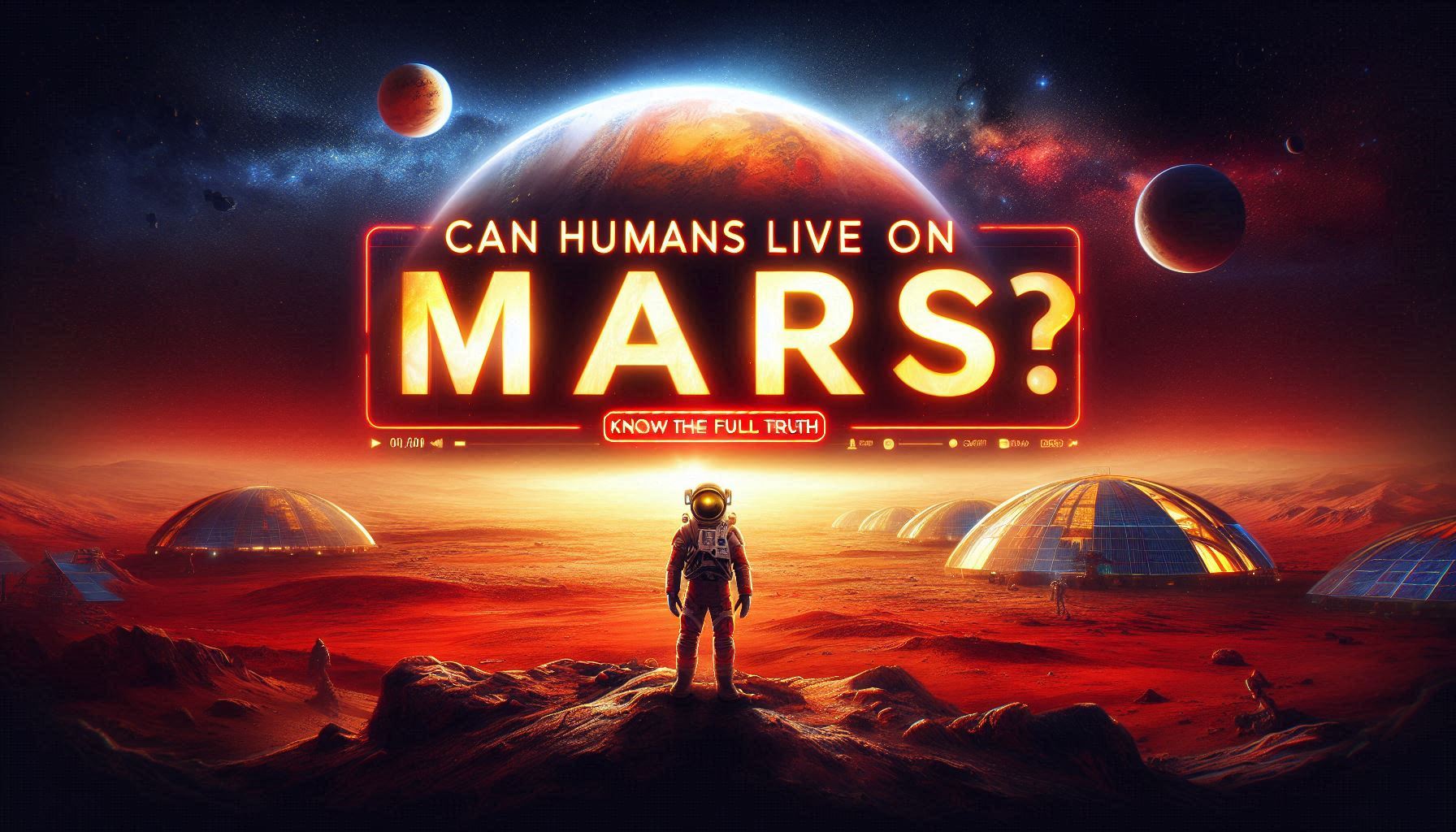Can humans live on Mars – The Red Planet or our future home?

In today’s time when natural resources on Earth are getting depleted, pollution is increasing and global warming is becoming extreme day by day, then only one question comes again and again in people’s mind: can we live somewhere else besides Earth? And whenever the answer to this question is found, the first name that comes in front is Mars. Mars, that is Laal Grah, is the smallest planet in our solar system. Its size is slightly smaller than Earth and it is considered to be the closest and most promising neighbour of our planet when it comes to settling life in some other world. But is this really possible? Is Mars limited to science fiction movies or can human life really be developed there? This article will try to explain the truth of this – in full detail, at the level of absolute human understanding.
The environment of Mars and the possibilities of human survival

First of all let us talk about the atmosphere of Mars, because air is the first requirement for living. The air of Mars contains more than 95% carbon dioxide while the oxygen content is just around 0.13%, which is too less for human survival. This means that if a human lands on the surface of Mars without any protection, he will find it difficult to breathe within a few seconds and he can die within a few minutes. The solution to this problem is oxygen production system – as NASA has started through the MOXIE experiment. MOXIE demonstrated the production of a little oxygen from Mars’ carbon dioxide, but this was still a laboratory level test; full-scale production of this technology for running daily life is still a matter of the future. Apart from this, the atmospheric pressure of Mars is also 100 times less than that of Earth, due to which any human body would have extreme difficulty in accepting the environment there.
Temperature, Weather and Climate Conditions

No life can survive without water, so the presence or absence of water on Mars is a crucial factor. Previous missions have proven that there are ice caps on Mars’ poles, and that there may be underground water in some places – but this water is either frozen or contaminated with toxic chemicals. This water cannot be used directly. It would first have to be extracted, then melted and filtered, before it would become usable. This whole process is energy intensive, and could be difficult for a small crew to manage. The filtration and recycling system will act as the backbone for the Mars base, but if this system fails, the question of survival will arise.
Is farming on Mars possible?

Food is as important to stay alive as water and oxygen. But the soil of Mars contains toxic chemicals called perchlorates which are harmful for the human body. For this reason, direct farming is not possible in the natural soil of Mars. For farming on Mars, closed greenhouses will have to be built where vegetables will be grown using advanced methods like hydroponics or aeroponics. These greenhouses will have to be supplied with artificial light, heat and water, the entire setup of which will be very complex and high-maintenance. Organizations like NASA and SpaceX are already working on this model, but making all these systems fully functional and failure-proof is still a future task.
Radiation – The biggest fear of Mars

The biggest problem of living on Mars is radiation. On Earth we have a magnetic field that protects us from harmful solar and cosmic rays, but Mars has no such protective layer. There is a continuous high radiation level on the surface, which can cause DNA damage, cancer, and neurological issues. If humans want to live safely on Mars, they will either have to build a radiation-proof base there or develop underground shelters. In both cases, heavy construction and materials will be needed, which can either be brought from Earth or made on Mars, both are expensive and time-consuming processes.
Traveling to Mars and the Realities of Living There

The journey to Mars is also not easy. The average distance from Earth to Mars is 225 million kilometers, and it takes 6 to 9 months to complete one trip. During this entire duration, astronauts have to face zero gravity, which has a negative effect on their muscles and bones. Mental health is also a big issue – staying in a confined environment for such a long time, without any real-time communication, can lead to loneliness and anxiety. And if there is an emergency, immediate help is not available. Mars mission is a one-way or long-term trip in which the risk factor is very high.
Mars Colonization – Will this dream come true?

Despite so many challenges, people are not giving up dreaming of settling on Mars. One reason for this is that the rotation period of Mars is similar to that of Earth – one day on Mars is 24.6 hours, which is quite close to the circadian rhythm of the human body. The gravity there is also not completely zero, it is around 38%, which can be manageable for human health if the right precautions are taken. The chances of natural disasters like earthquakes or floods on Mars are also less. All these factors give hopeful signals for a future settlement. Elon Musk’s company SpaceX plans to establish a self-sustaining human colony there by 2050. NASA is also planning to send the first human mission around 2030.
Conclusion – Can humans live on Mars?
Friends, living on Mars is difficult for now, but not impossible. Human civilization has always found new ways by overcoming difficulties. Mars is also one such destination where we need technology, patience and planning to reach there. Living there is full of risks for now – lack of oxygen, extreme temperatures, danger of radiation, limited water and food – all these are challenges which can be slowly solved in the future. Until all these solutions are ready, the dream of life on Mars will be limited to just one mission or a movie. But if everything goes as planned, one day humans will establish a base on Mars too, and maybe even create a new world.
FAQs :
Q1. Does life already exist on Mars?
No solid proof has been found so far. But there are chances of finding some microbial life forms or old fossils.
Q2. When will the first human go to Mars?
NASA’s target is the decade of 2030, but private companies like SpaceX are planning trial missions till 2027.
Q3. Is it really possible to build a house on Mars?
Technically it is possible, but it will require heavy infrastructure from Earth and multi-stage missions.
Q4. Will it be safe to live on Mars?
Not for now. Until a permanent solution of radiation, oxygen and food supply is not found, living on Mars will remain risky.


